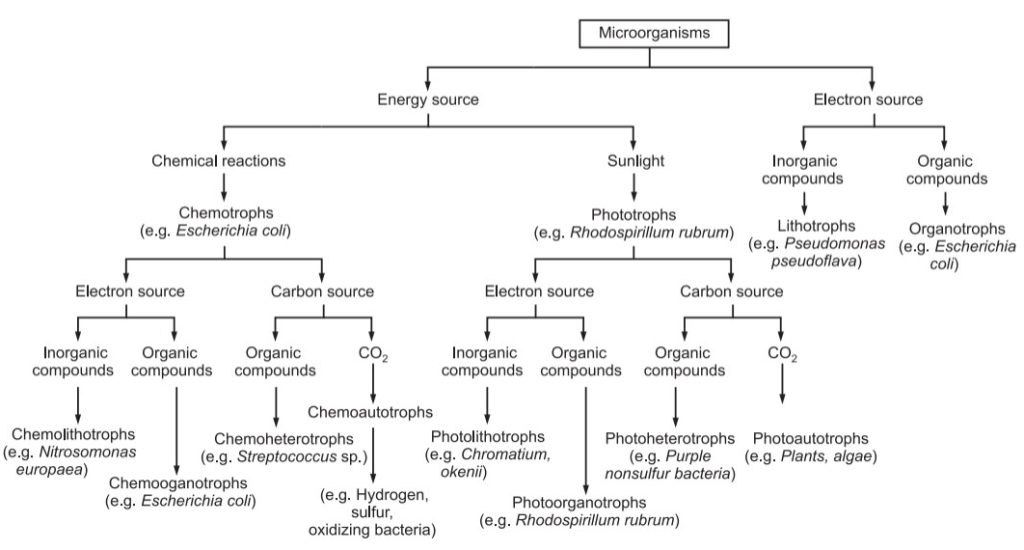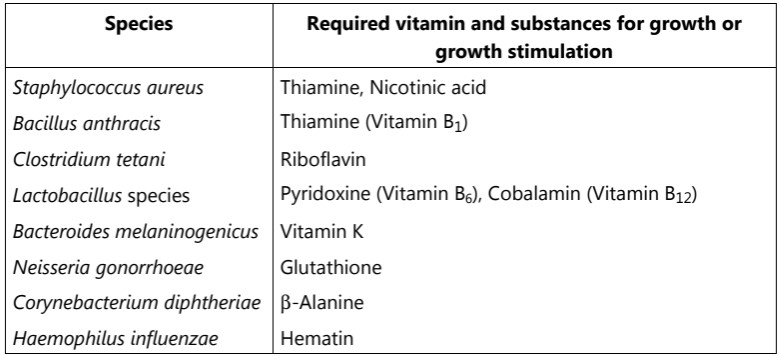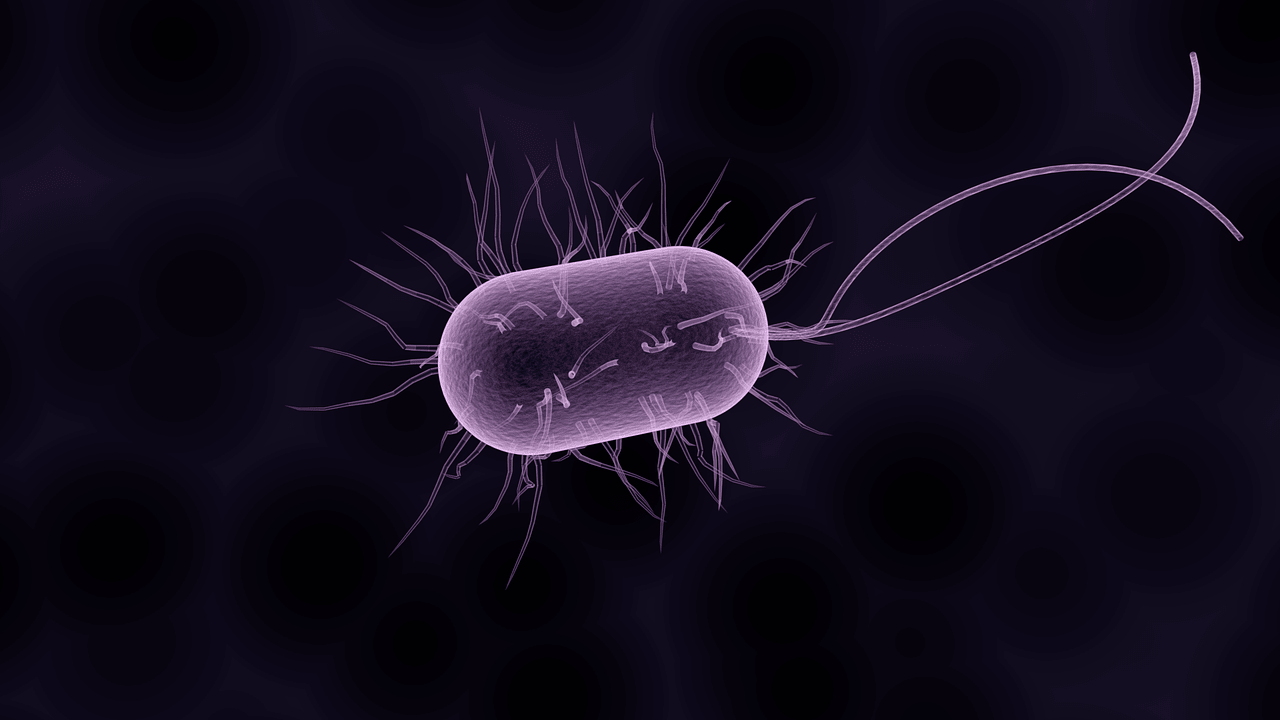Bacteria require adequate nutrition, optimum pH, temperature and oxygen for growth and multiplication. The rate at which bacteria grow and divide depends on the nutritional status of the environment. The growth of a single E. coli cell into a new daughter cell may occur within 20-30 minutes in rich laboratory media, whereas the same process is much slower in nutritionally depleted media. All bacteria obtain energy by oxidizing performed organic molecules such as carbohydrates, lipids and proteins. The metabolism of these molecules yields ATP as an energy source. Some species require only minimal nutrients in their environment, whereas others have complex nutritional requirements. Bacteria can be classified depending on nutritional requirements (Fig.1) i.e. sources of energy, electron, carbon etc.
Nutritional Requirements of Bacteria
1. Source of energy: Bacteria which derive their energy from sunlight are called phototrophs (e.g. Rhodospirillum rubrum) and those that obtain energy from chemical reactions are called chemotrophs (e.g. Escherichia coli).
2. Source of electrons: All microorganisms require a source of electrons for their metabolism. Bacteria which use reduced inorganic compounds as electron donors are called lithotrophs (e.g. Pseudomonas pseudoflava) and some other species which use organic compounds as electron donors are called organography (e.g. Escherichia coli). Among the phototrophic bacteria, some species use inorganic compounds (H2S) as a source of electrons and are called photolithotrophs (e.g. Chromatium okenii) and others which use organic compounds such as fatty acids and alcohols as electron donors are called photoorganotrophs (e.g. Rhodospirillum rubrum). Among the chemotrophic bacteria, some species use inorganic compounds as the source of electrons and are called chemolithotrophs (e.g. Nitrosomonas europaea) and others use organic compounds such as sugar and amino acids as electron donors and are called chemoorganotrophs (e.g. Escherichia coli).
3. Source of carbon: Microorganisms require carbon for synthesizing cell components. However, some species use CO2 as the major source of carbon. These microorganisms are called autotrophs (e.g. Chromatium okenii). Other species require organic compounds as a source of carbon, such species are called heterotrophs (e.g. Escherichia coli).
4. Nitrogen: Bacteria can use nitrogen from the atmosphere or inorganic compounds such as nitrates, nitrites, ammonium salts or organic compounds such as amino acids. Nitrogen is a major component of protein and nucleic acids.
5. Sulphur: Many bacterial species use sulphur from organic sulphur compounds, inorganic sulphur compounds and elemental sulphur. Sulphur is needed for the synthesis of amino acids (e.g. cystine, methionine etc.).
6. Phosphorus: Phosphorus, usually supplied in the form of phosphate is an essential component of nucleotides, nucleic acids, phospholipids etc.
7. Mineral salts: Bacteria require salts, particularly the anions such as phosphate and sulphate and cations such as sodium, potassium, magnesium, iron and calcium. These are normally present in natural environments or may be added to cultural media.

8. Growth factors or bacterial vitamins: Some bacterial species require organic compounds in minute quantities for growth. These are known as growth factors or bacterial vitamins. Some bacteria are capable of synthesizing their entire requirement of vitamins from a culture medium. Some other species cannot synthesize the vitamins from media and do not show growth in the absence of vitamins. Hence, for the growth of these species (Table.1), vitamins are added to the culture media.
Table .1: Bacterial vitamins or growth factors

9. Water: It is the major essential nutrient as it accounts for about 80 to 90% of the total weight of cells. Water is a highly polar compound and it contains micronutrients and trace elements which are required for the growth of bacteria.
Make sure you also check our other amazing Article on : Prokaryotes and Eukaryotes
